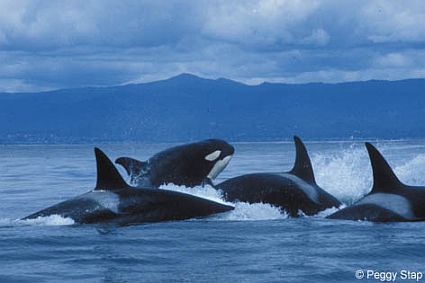
Recent times have seen more and more sightings of killer whales in arctic waters. This is being linked to the warming climate and melting sea ice. The whales are capitalizing on the warming climate as other habitats are lost, due to pollution and declining fish stocks.
However this is bad news for Inuit hunters who now have to compete for beluga, bowhead and narwhal whales that are nutritionally and culturally significant in their culture.
Killer whales, often referred to by their Latin name “orca“, are actually the largest member of the dolphin (Delphinidae) family. These wolves of the ocean are top predators, maintain complex social relationships, and hunt cooperatively as a pod. The killer whale diet consists of fish, squid, seals, sea lions and other whales and dolphins, and even sharks.
The latest data compiled by Mr Higdon and other researchers, who began researching the whales in September 2005, tracks the number of times they are spotted in the waters of Hudson Bay, against declining levels of sea ice.
Gabriel Nirlungayuk, director of wildlife for Nunavut Tunngavik Inc states:
The elders say they have always seen orcas coming to their waters to feed, But for the past three years they are noticing the orcas are sticking around in their waters more so than would have in the past.
As habitats shrink, animals will strike back to survive, global warming will help some and hinder others.
Via: Daily Telegraph

